Probably everything was heard about arthrosis (deforming osteoarthrosis).The ailment is included in the top three of the most common diseases of the musculoskeletal apparatus.However, despite such popularity, not everyone can say with confidence that he owns complete information about this articular disease.Since osteoarthrosis of the lower extremities is most often diagnosed, we will tell in detail about the arthrosis of the knee and the methods of its treatment.
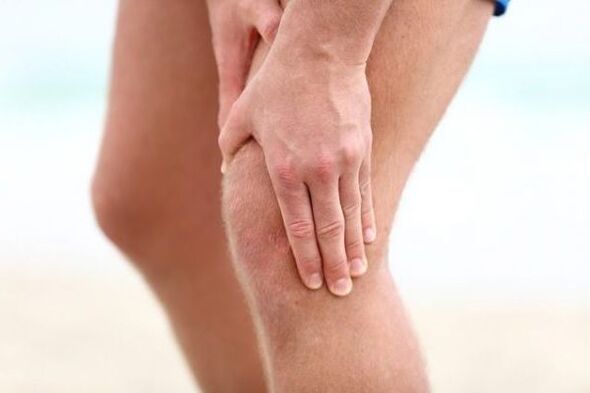
Briefly about arthrosis of the knee joint
So, what is it - the arthrosis of the knee and how much do we know about it?In medicine, there are several names of this disease, each of which characterizes the pathology on its part.
So, the term “gonarthrosis” makes it clear where the pathological process develops (from the Greek Gony - knee).
The name "arthrosis" (arthros - joint) means an ill -inflammatory disease in which degeneration and atrophy of cartilage tissues occurs.
There is another, most accurate concept - deforming osteoarthrosis.With a long flowing pathology, not only the surface of the knee joint is affected, but also nearby ligaments, tendons and muscles.Blood circulation deteriorates, trophy (nutrition) is upset and metabolism in periarticular tissues is disturbed.The cartilage is rapidly thinning and destroyed, bone growths (osteophytes) are formed on the side surfaces of the joint, the ligaments thicken, and lose elasticity.All this leads to the growing restriction of the mobility of the joint, up to the complete absence of movements in it.
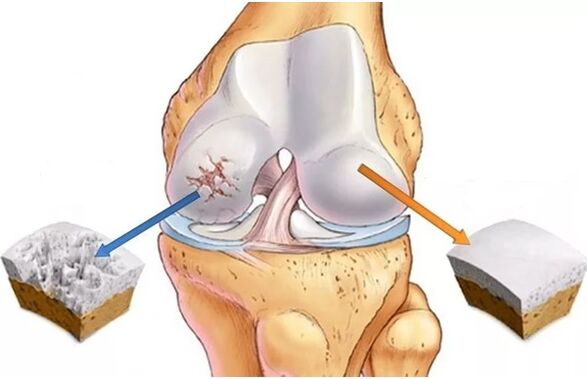
The main cause of the disease is age -related changes.In addition, there are a number of additional factors provoking the development of arthrosis:
- various injuries of the lower extremities;
- increased body weight;
- sedentary lifestyle;
- hereditary predisposition to diseases of the musculoskeletal system;
- Violation of metabolism.
The ailment develops slowly and for several years the symptoms of the joint damage are absent.Nevertheless, degenerative changes are gradually taking place in the articular structures.As a result, pain and crunch appear while walking, limiting mobility in the knee, atrophy of the nearby muscles of the thigh and lower leg develops.
The symptoms of deforming osteoarthritis depends on the degree of damage to the knee joint, becoming more intense and acute as the process progresses.
Therefore, do not postpone a visit to the doctor.It must be remembered that it is impossible to finally cure arthrosis, but it is quite possible to suspend its development.The sooner therapy begins, the more chances for a successful outcome and lower the risk of complications.
Methods of treatment of the disease
If the patient comes to the doctor with the question: “Doctor, I have arthrosis of the knee joint, tell me how and what to treat” - he will most likely not receive an unambiguous and concrete answer.Honartrosis therapy is a long process that includes a whole complex of therapeutic measures.Treatment of any pathology always begins with the collection of an anamnesis and diagnosis.
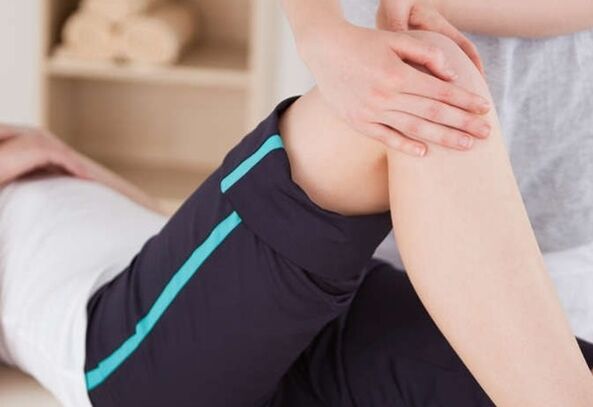
When planning the tactics of treatment, the doctor takes into account the patient's age, the stage of the disease, the degree of damage to the joint, the presence and severity of the pain syndrome.The unified therapy of osteoarthrosis of the knee, as well as one drug that helps everyone at once, does not exist.The fight against articular pathology should be complex and include not only drugs, but also physiotherapeutic procedures, therapeutic exercises, and recipes of traditional medicine.With the failure of all conservative measures, surgical intervention is carried out.
Drug therapy
All drugs used in the fight against deforming osteoarthritis can conditionally be divided into two groups:
- drugs that relieve the main symptoms of the disease (non -steroidal anti -inflammatory drugs, glucocorticosteroid hormones);
- Means that restore the joint and prevent its further destruction (chondroprotectors, including hyaluronic acid).
The treatment of gonarthrosis always begins with drugs of the first group, which quickly eliminate the pain syndrome.It is the pain in the joint that the patient is most suffered by the patient.
NSAID
Non -steroidal anti -inflammatory drugs are used to eliminate severe pain, discomfort, removal of edema and inflammation of the articular and nearby tissues.These drugs can be used orally, intramuscularly or locally, directly on the area of the affected joint.
For external use, various ointments and gels are used.Anesthetic effect, as a rule, occurs quickly enough and persists for several hours.The ointments are also good for using them for a long time, having coordinated the duration of the course with the attending specialist.
The course of treatment with non -steroidal anti -inflammatory drugs taken inward is no more than two weeks, since they have many side effects.
Therefore, NSAIDs with caution are prescribed for people with chronic diseases of the gastrointestinal tract and elderly patients.
Corticosteroids
If the treatment of NSAIDs is ineffective and painful syndrome, the doctor may prescribe intra -articular injections of hormonal drugs.They act much more effective than drugs of the non -steroid group.
Due to the many undesirable consequences, glucocorticosteroid hormones are introduced into the intraarticular cavity of the affected knee no more than once every 10-14 days and only during a period of pronounced exacerbation.
Chondroprotectors
Glucosamine and chondroitin sulfate prevent further destruction of the joint and contribute to the restoration of the surface of the cartilage plates.
Chondroprotectors improve the nutrition of intraarticular tissues, saturate the synovial fluid with the necessary trace elements, reduce pain, edema and inflammation.They can be used in the form of tablets, ointments, intra -articular injections.
The course of treatment with drugs that restore the structure of the cartilage lasts at least 4-5 months.The result is a persistent and prolonged effect for several years.
Speaking of chondroprotectors, one cannot fail to mention the III generation.These products contain, in addition to the chondroprotector, non -steroidal anti -inflammatory supplement, which makes it possible to reduce the amount of drugs taken and achieve good results.
Hyaluronic acid preparations are almost adequate to synovial fluid in its composition.Having hit the joint, the substance creates a thin film on the surface of the cartilage plates that protect them during movements.
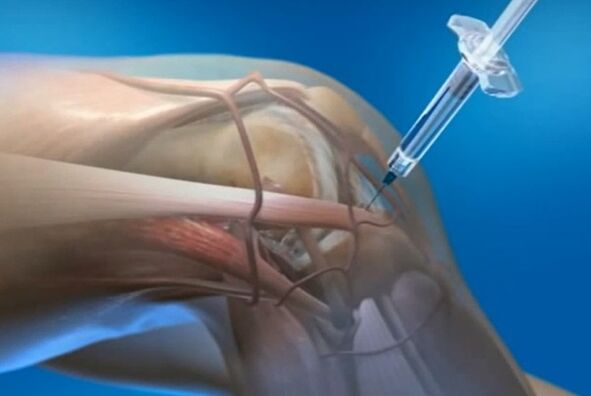
Intra -articular injections of hyaluronic acid are prescribed only during persistent remission.
Surgical treatment
Surgical intervention is used only in extreme cases when conservative treatment does not give positive results.Modern medicine has different ways of conducting operations that differ in the level of trauma:
- Arthroscopy- The most gentle method of surgical intervention.It can be used even in the early stages of arthrosis of the knee joint.The procedure is suitable for young people leading an active lifestyle, and can be repeated if necessary.
- Osteotomy.The operation is prescribed to patients with severe deformation of the joint.During the procedure, an artificial fracture of the deformed bone is performed.Then the experts provide it anatomically and physiologically correct fusion.
- Endoprosthetics.The most radical type of surgical intervention.During the operation, the joint is replaced by the implant.Despite the complexity of the execution and the duration of recovery, endoprosthetics is the best alternative to arthrodesis (joints of joint ends in order to complete immobilization of joint).
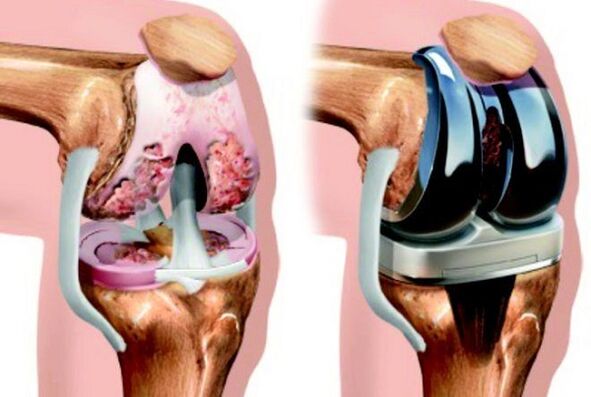
Physiotherapy in the treatment of knee arthrosis
At the initial stages of the development of the disease, physiotherapeutic procedures are very effective.They quickly eliminate pain, relieve muscle spasm, prevent the destruction of cartilage and accelerate its regeneration.
Using physiotherapeutic measures, drugs can be administered through the skin directly into the affected joint.Most often, with arthrosis of the knee, the following physiotherapists are prescribed:
- magnetotherapy (10–20 sessions);
- medical baths (radon, mud, bischophytic, hydrogen sulfide);
- Middle -volume ultraviolet irradiation (6–7 times);
- UHF-therapy;
- electrophoresis with solutions of anti -inflammatory, vascular, analgesic drugs;
- darsonvalization;
- Laser therapy (at least 10 sessions).
To determine what treatment is necessary in a particular case, the duration of the course of therapy can only be a specialist, focusing on the degree of damage to the joints, the patient’s age and the presence of concomitant diseases in him.
Exercise therapy
Therapeutic gymnastics is one of the components of the successful therapy for deforming osteoarthrosis.Charging strengthens the muscles, improves blood circulation, returns to the joints lost flexibility.
An approximate set of exercises
Classes are selected for each patient individually.LFK must be engaged regularly, gradually increasing the load on the joint.Exercises are best done several times a day for 10-15 minutes.
After an evening exercise, it is advisable to take a shower with a comfortable water temperature, after which you need to rub the sick with a terry towel and massage with anti -inflammatory ointments.
Therapy with folk remedies
Folk methods of treatment are very popular among patients suffering from arthrosis of the knee joints.All kinds of compresses, rubbing and ointments from medicinal herbs were widely used.Before using recipes for traditional medicine, you need to consult a doctor.It must be remembered that in no case can they replace the main drug therapy.

With severe pain in the joint, you can prepare a compress of 100 grams of honey and a tablespoon of food salt.The procedure is done at night.
Among patients, warming compresses of salt, sand or cereals are very popular.It is easy to make them - it is enough to heat the selected product in a pan, pour it in a bag and in a hot but not burning state, and attach to the joint.
In addition to these means, to combat arthrosis of the knees, you can use applications from paraffin, compress of cabbage or burdock leaves.
Applying recipes for traditional medicine, it must be remembered that with their help, gonarthrosis cannot be cured.You can only reduce the manifestations of the disease and improve the quality of human life.
Conclusion
To prevent age -related joint deformation, it is necessary to regularly play sports, monitor the correct nutrition, avoid injuries and wear comfortable shoes.If discomfort in the knee area appears, you must immediately contact the doctor.Only a specialist can make a diagnosis and say how to treat arthrosis of the knee.Self -medication will only aggravate the disease.
























